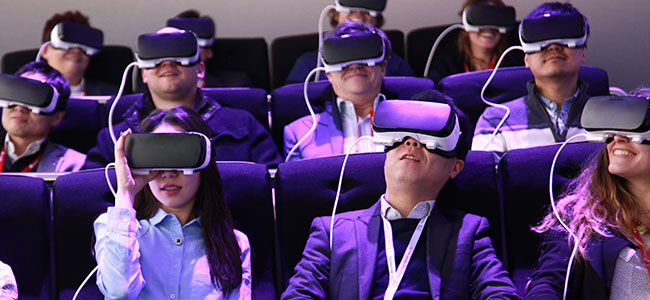Virtual Reality may be all the rage, but you might be asking yourself, “is it more than just a trend?” As you stare mournfully at your 3D TV. The answer appears to be a resounding “yes,” and the VR industry could see its first $1 billion year in 2016. According to a new study by International Data Corporation (IDC), Virtual Reality (VR) and Augmented Reality (AR) revenues are predicted to increase by more than 30 times from $5 billion in 2016 to $162 billion by 2020, with half of said revenue arising from hardware alone.
As with any new technology, the initial price tag limits consumer purchases, but IDC’s Worldwide Semiannual Augmented and Virtual Reality Spending Guide claims this is about to change. “The rise of new, less expensive hardware will put virtual and augmented reality technology within the grasp of a growing number of companies and individuals,” said Tom Mainelli, VP of devices and AR/VR at IDC in a statement.
Another potential reason for VR/AR staying power could be attributed to how the technology is integrated into our everyday lives. If you remember how luxurious (and huge) cellular phones were in the 1980s, you understand why a majority of consumers lived just fine without them until mobile became the norm. Someday, a life without AR/VR could be a distant memory as well, but for now, 360-degree video is an affordable substitute.
“For many years, augmented and virtual reality were the stuff of science fiction,” said Chris Chute, VP of IDC customer insights and analysis, in a press release. “Now with powerful smartphones powering inexpensive VR headsets, the consumer market is primed for new paid and user generated content-driven experiences. Recent developments in healthcare demonstrated the powerful impact augmented reality headsets can have at the industry level, and over the next five years we expect to see that promise become realized in other fields like education, logistics and manufacturing.”
IDC’s spending guide predicts that the majority (75 percent) of global AR/VR revenue will come from Asia/Pacific (excluding Japan), the US and Western Europe this year, but the US will lead by 2020. Investors are confident in the future of AR/VR as well, pouring money into the technology like never before. According to research from venture capital database, CB Insights, the amount of investor dollars earmarked for virtual and augmented reality (VR/AR) has increased about 7.5 times in the last year. In fact, investment in those technologies reached $1 billion in the first quarter of 2016, eMarketer reports, compared to $144 million in the same quarter of 2015.
“The big buzz around VR started with the Oculus Rift announcement, and when it started shipping we saw a 548 percent increase since January 2015,” Tamara Gaffney, principal analyst and director for Adobe Digital Insights (ADI) told [a]listdaily. “And we’re not seeing much decline. VR is holding that excitement, especially the HTC Vive, which has seen an over 2,000 percent increase since January 2015.”
Gaffney said the sustained excitement is because different devices are coming out. But that’s not translating to a lot of sales. “Right now the market is early adopters who want to try all the new stuff, while others are waiting.”

